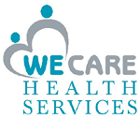



Fat EmbolismIndia offers information on Fat Embolismin India, Fat Embolismcost India, Fat Embolismhospital in India, Delhi, Mumbai, Chennai, Hyderabad & Bangalore, Fat EmbolismSurgeon in India
What is a fat embolism?
What are the causes?
Diagnosis
Symptoms
Treatment
What happens in ICU?
How long will the patient remain in ICU
What is a fat Embolism?
A fat embolism is a common problem for patients following trauma or surgery to the lower limbs. Under these conditions fat from bone marrow is able to escape into the bloodstream and form emboli (collection of fat droplets). Many patients who have fat emboli are not even aware as the symptoms may be minor. For a small number of patients however these emboli block small blood vessels in the lungs, skin or brain triggering a cascade of events leading to the illness known as ‘fat embolism syndrome'. The most severe problem of fat embolism syndrome is acute respiratory distress syndrome (ARDS) where the lungs are unable to absorb oxygen properly and patients become severely hypoxic (lacking in oxygen). It is this group of patients who will be admitted to the ICU.
What are the causes of fat embolism?
Fat embolism is most commonly associated with trauma or surgery of the pelvis or long bones of the legs. However it can also occur in illnesses or treatments where fat droplets are able to enter the bloodstream.
Some of the causes include:
Diagnosis
Diagnosis is made on the basis of a patient's presenting condition and symptoms, as well as excluding other possible problems. It is likely most patients will have chest xrays, blood tests and CT scans as well as cardiac investigations such as an ECG and echo cardiography to exclude a cardiac cause of symptoms.
What are the Symptoms
Symptoms of fat embolism syndrome are usually evident 24 to 72 hours after an injury, and involve the lungs, the brain and the skin. Symptoms include :
What is the treatment?
There is no specific therapy for fat embolism syndrome because it is a self-limiting illness. The treatment is therefore supportive, with the aim being to provide adequate oxygen to all of the tissues of the body. In minor cases oxygen therapy with an face mask may be adequate however in severe cases where the ALI is severe patients will require admission to ICU and full breathing (respiratory) support using a breathing machine (ventilator). The best way to prevent fat embolism when patients have fractures is to immobilise these fractures early.
What happens in ICU?
How long will the patient remain in the intensive care?
The patient will remain in the intensive care unit until they no longer require respiratory support and are recovering. The prognosis for patients who survive fat embolism is good, and recovery usually takes 2-4 weeks. In some cases however, visual disturbances may remain.
Surgery India Fat Embolism Treatment,Cost Fat Embolism,Fat Embolism, Fat Embolism Treatment, Fat Embolism, India Fat Embolism Diagnosis, India Fes, India Fat Emboli, India Fat Embolus, Surgery India Tour, India Fat Embolus, India Emboli, India Embolic, India Embolism, India Treatment Of Fat Embolism, India Cost Fat Embolism, India Fat Embolism Treatment, India Fat Embolism Syndrome, India Cost Fat Embolism, India Cost Fat Embolism Treatment, India Fat Embolism Treatment Experts, India Fat Embolism Treatment Hospital, India Affordable Fat Embolism Treatment India